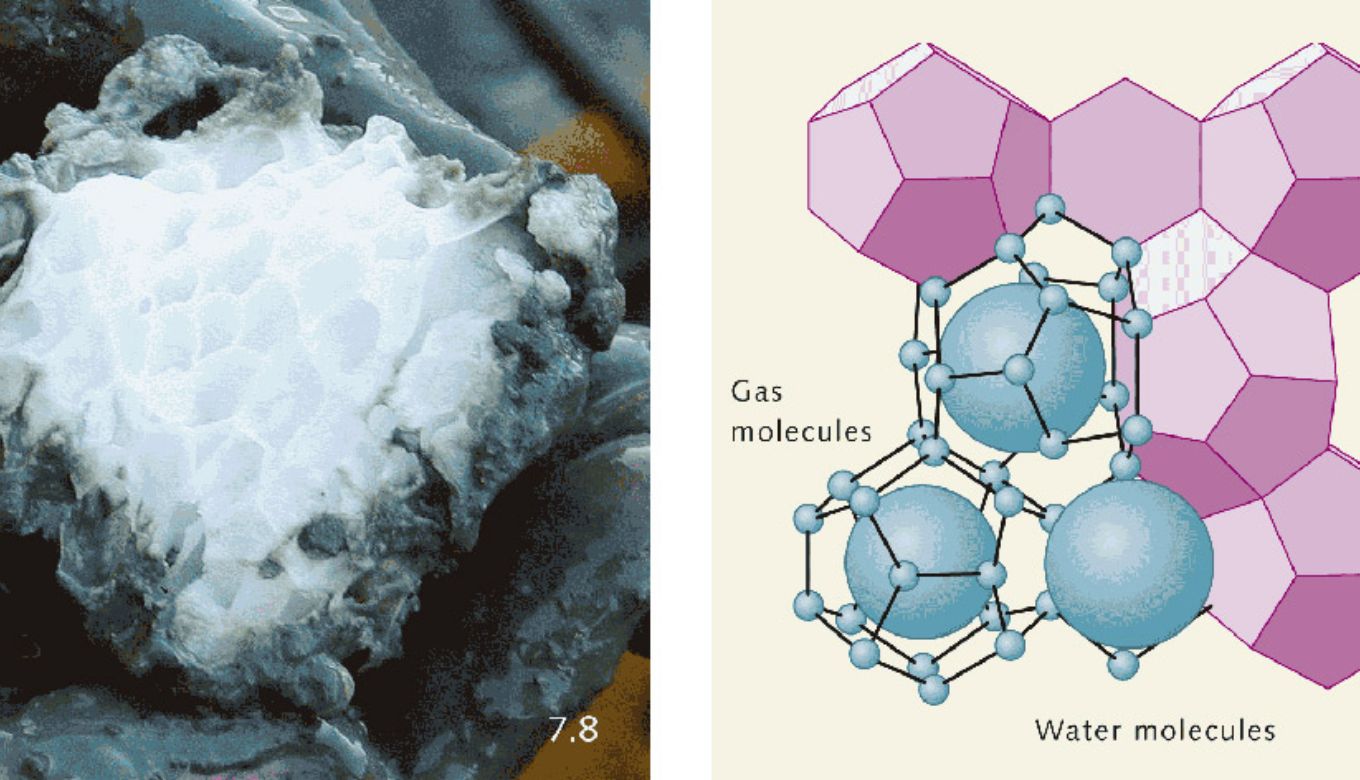New findings revealed that deep-sea methane hydrate is converting into the gas at a higher rate.
It is detected by the single-celled organism. The methane deposits are converted into gas and increasing the greenhouse gas effect.
How Methane Hydrate is Converted into Gas in the Deep-Sea Ocean?

Methane Hydrates
In the deep-sea ocean, chemosynthetic bacteria or organisms feed the methane deposits such as methane hydrates into the gas.
The methane dissociation process into gas cause the formation of bubbles above the sea. The methane gas is then released into the atmosphere.
Researchers found that Single-Celled Organisms Detect Methane Hydrate Dissociation at Sea

Researchers at Brown University found that the Benthic Foraminifera, a single-celled organism from the Miliolida order has the ability to detect methane transformation.
The fossils of these organisms record the event and timing of this process. They even detected the small-scale dissociation of methane.
Their study published in Earth and Planetary Science Letters, shows that the analysis of 372 individual Miliolida fossils that unrecorded methane undissociated events have been occurring in the Bay of Bengal in the Northern Indian Ocean for the past 1.5 million years at a small scale.
But recently due to the rise in oceanic water temperature methane dissociation occurred more often.
Steven Clemens, a professor of geological science at Brown said that “If you look at other drill sites around the area we studied, the records show only two methane dissociation events in the last million years,”
“Here, we see it pretty much everywhere when we look at these small scales, particularly during times when Earth’s climate was in a warm phase. It’s clear that methane is cycling a lot more rapidly and more often between its ice and dissolved phase than we could previously detect.”
The large dissociation is easy to spot, They are detected by the presence of large carbonate nodules and a chemosynthetic community of organisms that are present at the sites of methane release.
The research team said in their study that three types of Miliolida Foraminifera – Pyro Spp, Quinqueloculina Spp, and Spiroloculina spp. are sensing small-scale dissociation events.
But other foraminifera is unable to detect small-scale dissociation events.
Researchers Accidentally find the Organism that Detects Methane Hydrate Dissociation

Vessel JOIDES Resolution
Scientists accidentally find the location of the methane hydrate deposits. They were on a drilling expedition to the Bay of Bengal onboard the research vessel JOIDES Resolution.
They worked on the data for a study on past South Asian monsoons. They noticed the species of Benthic Foraminifera but they studied it later after they completed their original expedition work.
Methane Hydrate Dissociation Occur Due to Climate Change

Deep-sea methane is released into the atmosphere at a higher rate than previously detected. The reason behind methane deposit conversion into gas is due to global warming that rise the temperature of the sea.
The team analysis shows that climate change accelerated methane released into the atmosphere. These things happened in the shallow water of the arctic regions where waters are warming especially fast.
Methane hydrates are seen as an active research topic. Some are evaluated as energy resources and others as contributors to greenhouse gas when released in sufficient quantities to make it from sediments into the atmosphere.
Scientists are also looking at the different-different sites for methane around the world.
Also Read: Indian Satellites List, Images & Names of All Successful Satellites Launched by India!!



